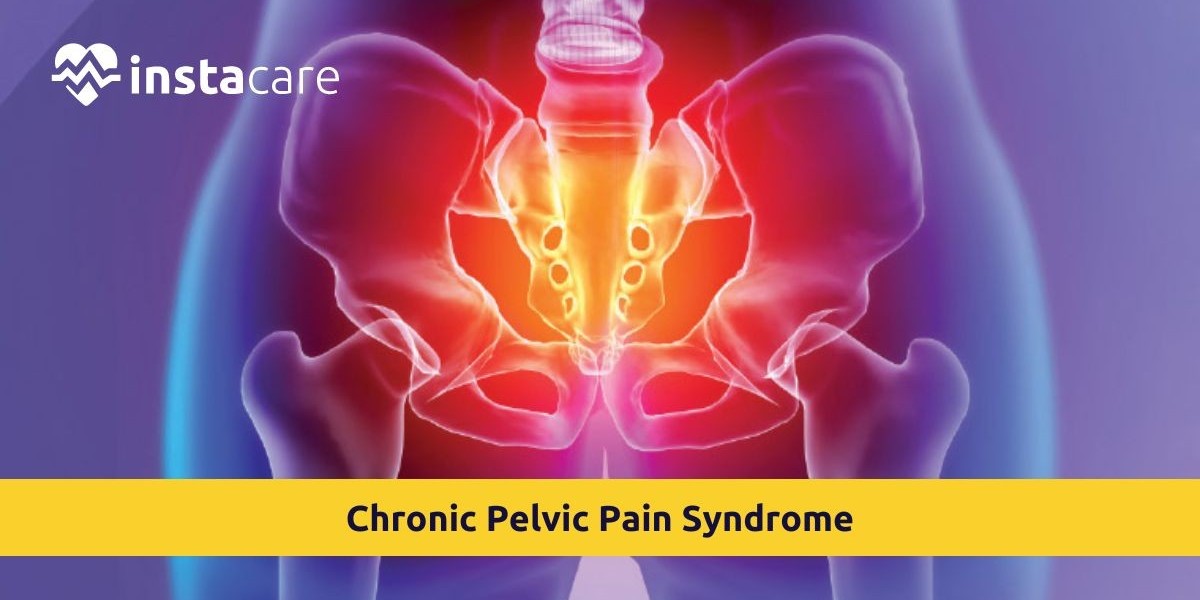Chronic pelvic pain is a common condition that affects many women at some point in their lives. This persistent discomfort can range from mild to severe and can interfere with daily activities and overall quality of life. It’s important to understand the potential causes of chronic pelvic pain and explore effective ways to find relief. In this blog, we’ll look at the common causes of chronic pelvic pain, its impact, and the various treatment options available to help manage this condition.
What Is Chronic Pelvic Pain?
Chronic pelvic pain is defined as any discomfort or pain in the pelvic region that lasts for six months or longer. It can occur anywhere between the navel and the thighs and can be caused by a variety of conditions, ranging from reproductive issues to gastrointestinal or urinary tract problems. Unlike occasional or short-term pain, chronic pelvic pain is persistent and can interfere with your daily routine, work, and even relationships.
Common Causes of Chronic Pelvic Pain
Several factors can contribute to chronic pelvic pain, and it’s often the result of more than one underlying condition. Some of the most common causes include:
1. Endometriosis
Endometriosis is a condition where tissue similar to the lining of the uterus grows outside the uterus, causing inflammation and scarring. This misplaced tissue can cause severe pelvic pain, especially during menstruation, intercourse, or bowel movements. The pain can be sharp, cramp-like, and debilitating.
2. Pelvic Inflammatory Disease (PID)
Pelvic Inflammatory Disease (PID) is an infection of the reproductive organs, often caused by untreated sexually transmitted infections (STIs) like chlamydia or gonorrhea. PID can lead to chronic pelvic pain if it causes scarring in the reproductive organs, such as the uterus, ovaries, or fallopian tubes. Symptoms include pain, abnormal discharge, fever, and painful intercourse.
3. Irritable Bowel Syndrome (IBS)
Irritable Bowel Syndrome (IBS) is a gastrointestinal condition that affects the large intestine. Women with IBS may experience pelvic discomfort due to bloating, constipation, diarrhea, and other digestive issues. The abdominal and pelvic discomfort associated with IBS can mimic the symptoms of pelvic pain.
4. Ovarian Cysts
Ovarian cysts are fluid-filled sacs that form on or inside the ovaries. While many cysts don’t cause symptoms, larger or ruptured cysts can lead to severe pelvic pain. The pain may be sharp and localized on one side of the pelvis, and it can occur suddenly if a cyst ruptures.
5. Fibroids
Uterine fibroids are non-cancerous growths that develop in or on the walls of the uterus. These fibroids can cause heavy menstrual bleeding, pain, and pressure in the pelvic area. Depending on their size and location, fibroids can lead to discomfort that becomes chronic if left untreated.
6. Interstitial Cystitis (IC)
Interstitial Cystitis, also known as painful bladder syndrome, is a condition where the bladder becomes inflamed and irritated. Women with IC experience chronic pelvic pain, particularly around the bladder area. Symptoms may include frequent urination, urgency, and discomfort during sexual activity.
7. Pelvic Floor Dysfunction
Pelvic floor dysfunction occurs when the muscles and tissues that support the pelvic organs become weak, tight, or overactive. This can lead to pain, pressure, or a feeling of heaviness in the pelvic region. Conditions like pelvic organ prolapse, urinary incontinence, and constipation are linked to pelvic floor dysfunction.
8. Adhesions and Scar Tissue
Adhesions are bands of scar tissue that can form after surgery, infections, or trauma. These bands can cause organs in the pelvic region to stick together, leading to pain, discomfort, and restricted movement. If the adhesions involve reproductive organs, they can also affect fertility.
9. Musculoskeletal Problems
Sometimes, chronic pelvic pain isn’t caused by a reproductive or gastrointestinal condition but by musculoskeletal issues. Problems with the muscles, ligaments, or joints in the pelvic area can cause pain and discomfort. This may occur due to injury, overuse, or conditions like fibromyalgia or herniated discs.
How Chronic Pelvic Pain Affects Your Life
Chronic pelvic pain is not only physically debilitating but can also have emotional, mental, and social effects. The ongoing discomfort can lead to:
- Stress and Anxiety: Persistent pain often causes stress, frustration, and worry, which can affect mental well-being.
- Reduced Quality of Life: Daily activities such as exercise, work, and socializing may become difficult, causing a sense of isolation and dissatisfaction.
- Relationship Strain: Chronic pelvic pain, especially when it interferes with intimacy, can put a strain on relationships.
- Difficulty Sleeping: Pain may make it difficult to fall asleep or stay asleep, leading to fatigue and irritability.
If you experience chronic pelvic pain, it’s essential to address both the physical and emotional aspects of the condition to improve your quality of life.
Treatment Options for Chronic Pelvic Pain
There are several ways to manage and treat chronic pelvic pain. The right approach depends on the underlying cause of the pain and may include:
1. Pain Management
Over-the-counter pain relievers like ibuprofen or acetaminophen can help alleviate mild pelvic pain. For more severe pain, a doctor may recommend prescription pain medications, muscle relaxants, or nerve pain medications to target the underlying cause of the discomfort.
2. Hormonal Therapy
If conditions like endometriosis, fibroids, or ovarian cysts are causing the pain, hormonal therapy may help. Birth control pills, hormonal IUDs, or injections can regulate the menstrual cycle and reduce the growth of tissues that cause pain.
3. Antibiotics or Surgery for PID
If PID is the cause of chronic pelvic pain, antibiotics are prescribed to treat the infection. In severe cases, surgery may be necessary to remove scar tissue or abscesses that are causing pain.
4. Physical Therapy for Pelvic Floor Dysfunction
Pelvic floor physical therapy can help strengthen or relax the muscles of the pelvic floor. A trained therapist can guide you through exercises that target these muscles to relieve pain and improve pelvic function.
5. Dietary Changes and Medications for IBS
Managing IBS-related pelvic pain may involve dietary changes, such as increasing fiber intake or avoiding trigger foods. Medications to treat IBS symptoms—such as antispasmodics or laxatives—can also help alleviate discomfort.
6. Surgery for Ovarian Cysts or Fibroids
If ovarian cysts or fibroids are causing chronic pain, surgical intervention may be necessary. Procedures range from cyst removal to myomectomy (removal of fibroids) or hysterectomy (removal of the uterus), depending on the size and location of the growths.
7. Psychological Support and Counseling
Chronic pain can take a toll on your mental health, so it’s important to seek support. Cognitive-behavioral therapy (CBT) and counseling can help you manage the emotional aspects of chronic pelvic pain, improve coping skills, and reduce stress.
Book an Appointment with a Gynecologist for Chronic Pelvic Pain Relief
If you're suffering from chronic pelvic pain, it’s essential to consult with a healthcare provider who specializes in pelvic health. You can easily book an appointment with a top-rated gynecologist in karachi through Instacare. This platform allows you to connect with the best gynecologists in your area, ensuring that you receive the right treatment for your condition.
Conclusion
Chronic pelvic pain is a complex condition that can stem from a variety of underlying causes, from reproductive issues like endometriosis and PID to gastrointestinal and musculoskeletal problems. Understanding the root cause of your pelvic pain is key to finding effective treatment and improving your quality of life. If you’re experiencing persistent pelvic pain, don’t hesitate to reach out to a healthcare provider to get the care you need.
Frequently Asked Questions (FAQs)
1. How long does chronic pelvic pain last?
Chronic pelvic pain lasts for six months or longer. It can be continuous or intermittent, depending on the underlying cause.
2. Can pelvic pain be a sign of something serious?
Yes, chronic pelvic pain can be a sign of serious conditions such as endometriosis, fibroids, or even cancer. It’s important to consult a doctor for proper diagnosis and treatment.
3. Is it possible to live a normal life with chronic pelvic pain?
With the right treatment plan, many women can manage chronic pelvic pain and continue with their daily activities. Early diagnosis and appropriate therapy are crucial for improving quality of life.








